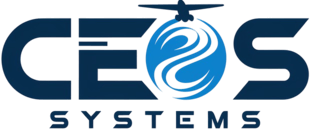Step aboard as we explore the fascinating concept of the Airbus A390, a theoretical ultra-large passenger aircraft that pushes the boundaries of aviation engineering. While this aircraft exists only in concept, its potential impact on the future of air travel has captured the imagination of aviation experts worldwide.
The Airbus A390 represents a bold vision for the future of commercial aviation, conceived as a successor to the already impressive A380. This theoretical aircraft would feature a revolutionary triple-deck design, capable of accommodating over 700 passengers in standard configuration, with potential for 1,000+ in all-economy layout.
The Concept of the World’s Largest Jumbo Jet
The A390 concept emerges from aviation’s continuous pursuit of efficiency and capacity. This ambitious project would incorporate:
- Advanced composite materials for lightweight construction
- Next-generation propulsion systems
- Revolutionary aerodynamic improvements
- Enhanced fuel efficiency technologies
- Innovative structural design solutions
Design and Variants of the Airbus A390
The A390’s revolutionary design centers around its distinctive three-deck configuration, earning it comparisons to a ‘beluga whale’ due to its unique proportions. Four high-efficiency engines would power this massive aircraft, while cutting-edge engineering solutions would ensure optimal aerodynamic performance.
Exploring the 3-Decker Design
| Feature | Description |
|---|---|
| Structure | Triple-deck configuration with complete passenger cabins |
| Materials | 60%+ advanced composites |
| Engineering | Enhanced structural reinforcement with innovative load distribution |
| Design Focus | Balance between capacity and operational efficiency |
Variants and Their Unique Features
- A390-800 (Base Model) – Standard three-deck configuration with versatile cabin layout options
- A390-900 – Extended fuselage (+7 meters) accommodating 100 additional passengers
- A390-1000 – Flagship variant with enhanced range (9,000+ nautical miles) and maximum capacity of 1,000 passengers
Technological Advancements in the A390
The theoretical A390 would showcase unprecedented technological innovation, featuring:
- 70%+ composite and advanced metallic alloy construction
- Next-generation fly-by-wire controls
- Augmented reality cockpit displays
- High-voltage electrical architecture
- Advanced environmental control systems
- State-of-the-art entertainment systems across all decks
Engine Specifications and Performance
The theoretical Airbus A390 would be powered by four next-generation Rolls-Royce engines, featuring enhanced variants of the Trent XWB series. These powerplants would incorporate:
- Thrust capacity exceeding 100,000 pounds per engine
- Geared turbofan technology
- Ceramic matrix composites for higher temperature tolerance
- Adaptive cooling systems
- Active flow control surfaces
- Laminar flow nacelles
- Next-generation noise reduction technology
| Performance Metric | Specification |
|---|---|
| Fuel Efficiency | 25% lower per seat-mile than A380 |
| Cruise Speed | Mach 0.89 |
| Maximum Range | 9,000+ nautical miles |
Airlines and Market Adoption
Despite being conceptual, the A390 has garnered significant industry attention. Market adoption would likely mirror the A380’s introduction pattern, but with key differences reflecting today’s aviation landscape. The aircraft’s extraordinary capacity would make it suitable exclusively for high-volume international routes connecting major global hubs.
Lufthansa as the Launch Customer
Aviation analysts consistently identify Lufthansa as the most probable launch customer for the A390, given their:
- History as a pioneer for new Airbus models
- Strategic position operating major European hubs
- Technical expertise and maintenance capabilities
- Star Alliance membership enabling collaborative learning
- Potential initial order of 15-20 aircraft
Emirates’ Commitment to the A390
Emirates would likely become the A390’s largest operator, potentially ordering up to 100 aircraft. Their commitment would be driven by:
- Established hub-and-spoke network centered on Dubai
- Extensive experience with ultra-large aircraft operations
- Existing infrastructure capable of handling massive aircraft
- Plans for enhanced premium amenities across three decks
- Strategic focus on high-volume international routes
Operational and Infrastructure Considerations
Operating the A390 would require comprehensive operational adaptations, including:
- Restructured ground operations for 1,000+ passengers
- Multiple jet bridges for simultaneous three-deck access
- Reinforced taxiways and aprons
- Enhanced baggage handling systems
- Modified crew management procedures
- Specialized maintenance protocols
Challenges of Ultra-Long-Haul Routes
The A390’s theoretical design presents unique operational challenges for ultra-long-haul routes exceeding 15 hours. The complexities of these extended journeys require:
- Multiple flight crew rotations with sophisticated rest facilities
- Advanced fuel management strategies balancing payload and range
- Enhanced reserve fuel calculations for diversions
- Specialized maintenance protocols for extended operations
- Complex flight planning systems for optimal routing
Passenger comfort on these marathon flights demands innovative solutions within the triple-deck design, including:
- Dedicated relaxation zones for passenger movement
- Advanced climate control systems to minimize jet lag
- Dynamic lighting schemes mimicking natural daylight
- Comprehensive entertainment systems with extended content libraries
- Enhanced connectivity solutions for business productivity
Airport Infrastructure and Runway Needs
| Infrastructure Element | Requirement |
|---|---|
| Runway Length | Minimum 11,500 feet (3,500 meters) |
| Maximum Takeoff Weight | Exceeding 650 tons |
| Wingspan | Approaching 100 meters |
| Compatible Airports | 30-35 major international hubs |
The A390’s unprecedented scale would require extensive airport modifications, including reinforced concrete runways, reconfigured taxiway systems, and specialized terminal facilities featuring triple-level boarding bridges. These substantial infrastructure investments would limit operations to select major international airports capable of accommodating such a revolutionary aircraft.
The Future of Large Aircraft
Industry trends indicate a shift away from ultra-large aircraft like the theoretical A390, with manufacturers focusing on fuel efficiency and operational flexibility rather than maximum passenger capacity. Current developments prioritize:
- Sustainable operations through improved aerodynamics
- Advanced lightweight materials
- Next-generation propulsion systems
- Point-to-point travel optimization
- Smaller wide-body aircraft with better economics
Market Trends and Future Prospects
The aviation market shows a clear preference for versatile aircraft like the Airbus A350 and Boeing 787, carrying 250-350 passengers with exceptional fuel efficiency. However, specialized market segments might still drive future large aircraft development, particularly for high-volume routes between major global hubs.
Future large aircraft development will likely focus on revolutionary advancements including:
- Hybrid-electric propulsion systems
- Laminar flow technologies
- Radical aerodynamic designs
- Enhanced environmental performance
- Improved operational efficiency
